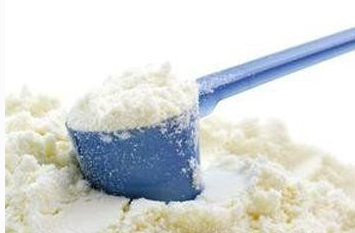
At present, the valid infant formula food national standards (hereinafter called GB) in China are GB 10765-2010 Infant formula food, and GB 10767-2010 Older Infant and Young Children Formula Food.
On 7 September 2018, National Health Commission of China (NHC) issued 3 drafts of GB 10765 Infant formula food, GB 10766 Older Infant Formula Food, and GB 10767 Young Children Formula Food for public comments. Opinions and advices shall be given before 30 October 2018. Compared with current GBs, there are 2 significant changes in the new drafts
- GB 10767-2010 is divided into 2 independent GBs: GB 10766 and GB 10767. The requirements for older formula food and young children formula food will be stipulated separately.
- The age groups for stage 1, stage 2 and stage 3 become 0-6 months, 7-12 months, and 13-36 months, rather than 0-6 months, 6-12months, and 12-36months, which avoid the cross-repetition between different GBs.
Meanwhile, a lot of nutrients indexes, safety indexes, etc., in the new drafts are adjusted as well. CIRS has made an analysis on the main changes as follows.
GB 10765 Infant Formula Food
I. The minimum and/or maximum level for most nutrients are adjusted
Including protein, fat, vitamin A, D, K, C, B1, B2, B6, B12, niacin, folic acid, selenium, inositol, taurine, carnitine, etc. For example,
|
Nutrients |
Current requirement (per 100kJ) |
Drafted requirement (per 100kJ) |
|
Vitamin D |
0.25-0.60µg |
0.48-1.20µg |
II. Add the requirements of iron, zinc, phosphorus in soybean based products
The requirements of 3 minerals in soybean based products (per 100kJ) are as follows
- Iron: 0.15-0.36mg;
- Zinc: 0.18-0.36mg;
- Phosphorus: 7-24mg.
III. Choline become an essential component of infant formula food
The content of choline is changed from "1.7-12.0 mg/100 kJ" to "4.8-23.9 mg/100 kJ" as well.
IV. The expressions of DHA and AA are revised
|
Nutrients |
Current requirement (per 100kJ) |
Drafted requirement (per 100kJ) |
|
DHA |
≤ 0.5% of total fatty acids |
3.6-9.6mg |
|
AA |
≤ 1% of total fatty acids |
≤ 19.1mg |
GB 10766 Older Infant Formula Food
I. Add the requirements of whey protein and lactose in milk-based products
- The content of whey protein shall be ≥ 40% of protein;
- The primary choice of carbohydrate is lactose. The content of lactose shall be ≥ 90% of total carbohydrate.
II. The minimum and/or maximum level for most nutrients are adjusted
Including protein, fat, vitamin A, D, E, K, B1, B2, B6, B12, C, niacin, folic acid, pantothenic acid, calcium, magnesium, phosphorus, inositol, taurine, etc. For example,
|
Nutrients |
Current requirement (per 100kJ) |
Drafted requirement (per 100kJ) |
|
Vitamin B1 |
≥ 11µg |
14-72µg |
|
Taurine |
≤ 3mg |
0.8-4.0mg |
III. Add the requirements of protein, iron, zinc, phosphorus in soybean based products
The requirements of these 4 nutrients in soybean based products (per 100kJ) are as follows,
- Protein: 0.53-0.84g
- Iron: 0.3-0.48mg;
- Zinc: 0.18-0.36mg;
- Phosphorus: 10-26mg.
IV. Manganese, selenium, and choline become essential components for older infant formula food
The contents of them are changed as well
|
Nutrients |
Current requirement (per 100kJ) |
Drafted requirement (per 100kJ) |
|
Choline |
1.7-12.0 mg |
4.8-23.9mg |
|
Selenium |
0.48-1.90µg |
0.48-1.91µg |
|
Manganese |
0.25-24.0µg |
0.24-23.90µg |
V. The expressions of DHA and AA are revised
|
Nutrients |
Current requirement (per 100kJ) |
Drafted requirement (per 100kJ) |
|
DHA |
≤ 0.5% of total fatty acids |
3.6-9.6mg |
|
AA |
≤ 1% of total fatty acids |
≤19.1mg |
VI. Add the labeling requirment
Add the requirement of “Images of infant or woman cannot appear on the labels. It is not allowed to use the expressions such as “like human milk”, “like breast milk” or similar terms.”
GB 10767 Young Child ren Formula Food
I. Add the requirements of lactose in milk-based products
The content of lactose shall be ≥50% of total carbohydrate (except lactose-free or low lactose products).
II. The minimum and/or maximum level for most nutrients are adjusted
Including protein, fat, vitamin A, D, E, K, B1, B2, B6, B12, C, niacin, folic acid, pantothenic acid, copper, iron, calcium, magnesium, phosphorus, inositol, taurine, etc. For example,
|
Nutrients |
Current requirement (per 100kJ) |
Drafted requirement (per 100kJ) |
|
Protein |
0.7-1.2g |
0.43-0.96g |
|
Iron |
0.25-0.50mg |
0.24-0.60mg |
III. The expressions of DHA and AA are revised
|
Nutrients |
Current requirement (per 100kJ) |
Drafted requirement (per 100kJ) |
|
DHA |
≤ 0.5% of total fatty acids |
≤9.6mg |
|
AA |
≤ 1% of total fatty acids |
≤19.1mg |
Other Revisions
There are some common drafted revisions in these 3 GBs, including:
- The limits of contaminants and mycotoxin are no longer stipulated in these 3 GBs, but shall comply with GB 2762 and GB 2761;
- The test methods are updated;
- Change “the number of active bacteria of active probiotics in product should be ≥ 106CFU/g (ml) into “the number of active bacteria of each active probiotic in product should be ≥ 106CFU/g (ml)”, which specified the requirements for each probiotic, and avoid ambiguity.
In summary, in order to guarantee the safety and efficacy of infant formula food, most nutrients in these 3 GBs are planned to be adjusted. In the future, the product classification of China infant formula food will be clearer, the product quality requirements will be more stringent, and the test methods will be more scientific. CIRS will continue to pay attention to the official release of these GBs.
Reference
NHC Notice

